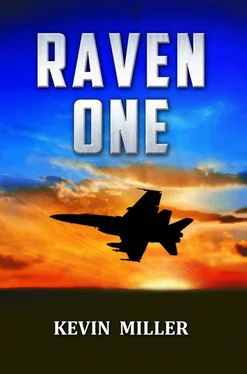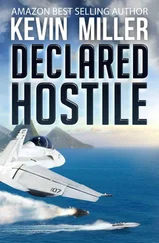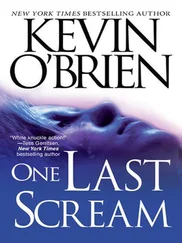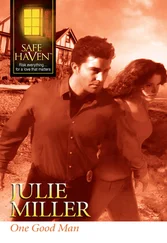CAG Tony Swoboda and Cajun greeted Wilson at the ladder as he shut down 402 along the foul line. Wilson was exhausted, and despite the piercing whine of jet engines all around him, he just wanted to sit there in the ejection seat with his head back and his eyes closed, feeling the warmth of the sun on his face. Mindful, though, of hundreds of eyes focused on him, he turned off the displays, the radios, the computer and all the other avionics components — and made sure he used the same method he always used postflight. He then gathered his nav-bag and, double-checked his seat safe, and pulled himself out and onto the left LEX and down the ladder.
Once on deck, Wilson turned first to Riley, the plane captain, and three flight deck troubleshooters. “Jet’s down for overstress, guys, and the top of the left outer wing panel was impacted by four-twelve.” They nodded, tight-lipped, but understood the significance of the statement. “Thanks guys, nice job.” He turned to slap the young plane captain on the back and said, “Riley, thanks.”
“Thank you, sir. Glad you’re okay,” Airman Riley replied with searching eyes, still trying to make sense of the apparent loss of Lieutenant “Prince” Howard.
Wilson then turned to CAG, who extended his hand and grabbed his arm. “ Welcome home, Jim. You did an outstanding job today,” he shouted over the din of the flight deck, squeezing Wilson’s hand like a vise grip. “Let’s talk about it below,” CAG said. “The admiral wants to see you.”
With a grim smile visible under the dark visor of his helmet, Cajun patted Wilson on the back. CAG led them below to the Captain’s passageway and flag country. CAG Swoboda was an F-14 radar intercept officer by trade, and commanded one of the last F-14 squadrons. Short and stocky, with a weathered face and squinty eyes, he could pass for a mob boss, an impression exacerbated by his Philly street accent. In the wing, he was popular, respected as a fair leader who knew his business. As they navigated the labyrinth of passageways, Swoboda peppered Wilson with questions: How many missiles did you see? Was there any ground fire? How many Iranian aircraft did you see? Are you sure Howard didn’t get out? Rounding the corner to the main starboard passageway Wilson looked aft and saw Psycho. She gave him a smile and a look that conveyed her thoughts: Good to see you back, Flip.
When they got to the admiral’s in-port cabin, Wilson was led to the large, well-appointed living area, which was full of flag and air wing staff officers, including DCAG and intel officers from CVIC. Wilson, face etched with lines from his oxygen mask and his flight suit stained with perspiration, felt conspicuous in flag country. When the flag lieutenant brought him a glass of water, Wilson downed it in one gulp.
Captain Swartzmann emerged from flag plot in his navy blue sweater, glasses perched on the tip of his beak-like nose. If he’s not the oldest officer in the Navy , Wilson thought, he looks like it . He resembled a dour, pasty-faced Puritan out of the Massachusetts Bay Colony — someone like Ichabod Crane. He walked up to Wilson as if to inspect him. Without even looking Wilson in the eye, he opened his notebook and asked, “So, what were you guys doing over Iran?”
Taken aback by the implication, Wilson’s mouth opened and his eyes widened in shock. Before he could answer, CAG did it for him.
“Gene, his wingman was incapacitated over the Gulf and flew into Iran on autopilot. Jim stayed with him in an effort to revive him — and even tried to nudge him back to the west with his own airplane. Very dangerous. The Iranians shot Lieutenant Howard down, and Jim — with some damn good flying — fought his way out in an unarmed airplane. Barely made it back.”
Swartzmann, unmoved, peered down at CAG. “I asked him .”
A chill filled the room, and 30 people looked at CAG to see how he would react. Swoboda, used to the cutting sarcasm of the Chief of Staff toward his aviators, was having none of it.
“This pilot is mine ,” he exploded, “and I haven’t had the chance to properly question him yet. I haven’t even had the chance to review his tapes! I was ordered to bring him here directly from the jet and here he is. But I resent your insinuation that he or Howard were doing anything less than a by-the-book routine training mission.”
Just then Admiral Smith, wearing khakis and a green flight jacket, entered from flag plot. Everyone in the room came to attention. “Flip,” he said in his rich baritone as he walked up to Wilson with his hand extended. The admiral was short and wiry, with salt and pepper hair and a long, weathered face. His eyes were big and brown under bushy brows, and his booming voice did not match his slim body. “Well done today, and I’m sorry about the loss of your wingman.” Turning to Cajun, he added, “Skipper, I’m afraid national assets indicate he’s dead. Not official yet, but there doesn’t appear to be much of a chance. I’m very sorry. When we’re done here, I want you to call the commodore back home to prepare him for the official word when it comes. Gene, make that happen, please.”
“Yes, sir,” the Chief of Staff replied.
Turning to Wilson, Smith said, “Flip, let’s hear it. What happened?”
“Sir, we’d just finished a 1v1 south of the ship and were on the ladder. We went up to hang on the blades at 28,000. We motored a while, and as we neared the Iranian coast, I came up on the radio for him to turn around. He didn’t respond, and I got short with him to turn, but nothing. When I joined up, I saw him motionless, but I also saw his mask dangling down and his canteen in his hand. I started yelling at him to wake him up, figuring it was hypoxia. So I’m yelling at him, and then all the strike group ships and everyone else starts giving us Waterloo calls, so I have to deal with trying to explain to them what we’ve got here.”
Smith nodded as Wilson continued.
“We entered Iran about 80 miles south of Bushier, a pretty deserted area, but we were tracking northeast at 450 knots ground. I figured we had to get out of Iran, so I tried to get underneath his wing to see if my jet wash could roll him up a bit. It worked a little, but his autopilot fought it. At one point we swapped paint when his wingtip slammed down on me. By then Prince was not moving, and his canopy started to freeze up. My cockpit was at 12K, and I’m thinking he’s got a pressurization problem, and he’s hypoxic with his mask off. I was talking to Knight the whole time, and he called some bogeys out of Bushier at my 9 o’clock long. At the same time, I started getting some RWR hits off the nose. My scope was clean, but something didn’t feel right. I opened up a bit off Prince, and a minute later a missile came down on him. It looked like a streak — white — and I’d say it hit just behind the cockpit. No warning. No plume. Just a huge fireball, and his jet started breaking up. Never saw a chute.”
Everyone in the room was focused on Wilson, and behind the crowd of officers Wilson noticed a sailor setting the admiral’s dinner table. He, too, was listening.
“Go on,” Smith said.
“I turned to engage — training took over — and we went to the merge. At first I thought it was a MiG, but this jet was something I’ve not seen before. Never seen anything like it. It had a long fuselage with a small nose, a huge intake, canards up forward, delta wings…”
“Was it this ?” the Air Wing Intelligence Officer asked, showing him a photo of a jet. Wilson studied it… the long bowed fuselage, the huge intake, the slight “V” to the vertical stabs, the canards.
Читать дальше












